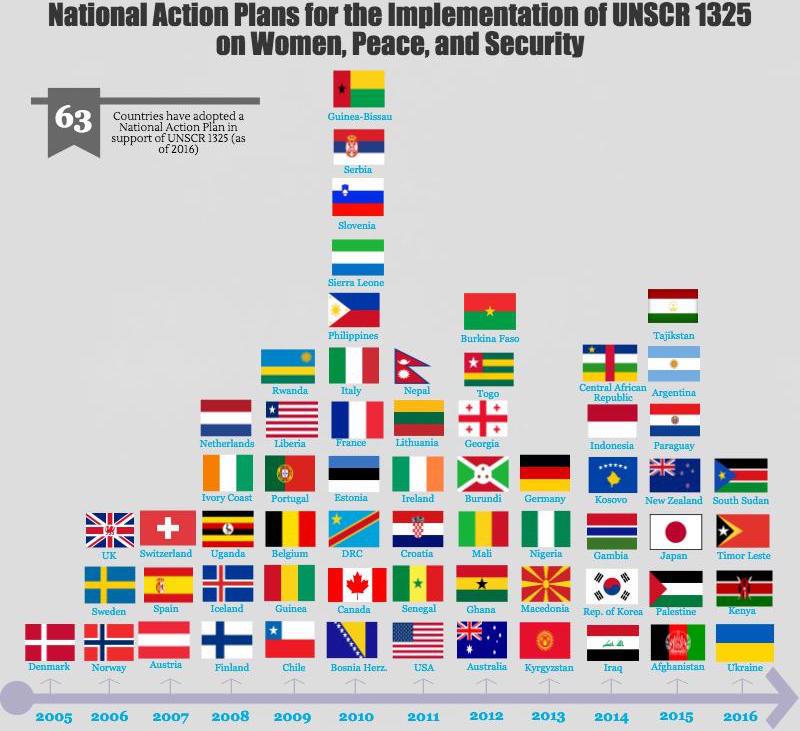National Action Plans Monitoring: Year in Review
By Anna Warrington
The number of National Action Plans developed and launched by UN Member States for the implementation of UNSCR 1325 as of December 2016. (Photo: WILPF/PeaceWomen)
Are National Action Plans (NAPs) an effective tool for implementing the Women, Peace and Security (WPS) Agenda? In 2016, we see unfortunately that despite the potential of NAPs, they too often remain check-the-box exercises without meaningful impact.
At the end of 2016, 63 UN member states (33%) had National Action Plans. Four new NAPs were launched, including plans by Kenya and Ukraine and announcement for plans by South Sudan and Timor Leste. In addition, the United States of America launched their second NAP, and the Netherlandsreleased a third NAP. Notably, neither of these all NAPs include specifically-allocated budgets, disarmament remains limited, and implementation mechanisms continue to be lacking.
Of the 63 NAPs adopted to date, only 12 include some allocated budget for implementation. Furthermore, less than half of the NAPs (40%) include references to disarmament. Strengthening conflict prevention commitments line with the Global Study on UNSCR 1325 and reviews on peacebuildingand peace operations is essential for a holistic approach that addresses root causes of conflict and violence. Substantially stepping up dedicated funding is critical for moving from words to action.
Some progress has been made with more Member Statesdeveloping NAPs. However, WILPF’s NAP monitoring shows that 38% (24 countries) of existing NAPs will expire by the end of 2016 with almost no commitments made to develop new or update existing plans. So far, only Canada, Spain, and Switzerland have committed to renewing their NAP, Angola, Brazil, Czech Republic, Croatia, and Kazakhstan, have also committed to launching NAPs in 2017. Bangladesh, Jordan, and Turkey have also expressed interest in drafting NAPs. Other states refrain from making concrete commitments for particular WPS-sensitive policies. In 2017, building on lessons learned for localising UNSCR 1325 to address key gap areas is critical for enhancing concrete action for local impact.
Find the most recent list of UNSCR1325 National and Regional Action Plans here.

